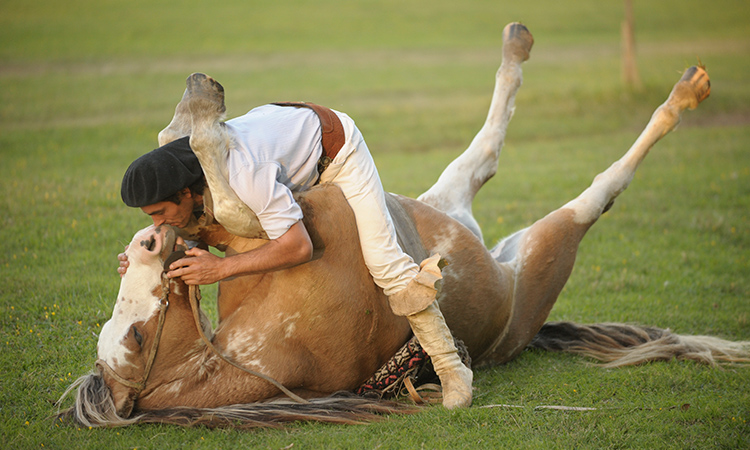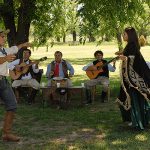Indian Dressage: History and Method
Even today, many gauchos are inspired by a training technique developed by Indigenous people to create a bond of trust and harmony with their horse.
For centuries, the Argentine horse has been not only the gauchos’ working tool but also his life companion. Even today, many gauchos are inspired by a training technique developed by Indigenous people to create a bond of trust and harmony with their horse. Today, in Argentina, this is called the “Doma India”.
Origin of the Criollo Horse

From Andalusian Berber origin, this horse was introduced to the American continent by Pedro de Mendoza in 1535. Initially rather large, the Argentine horses adapted to their new environment and reduced in size. They quickly proliferated in the plains of the Pampas and formed large herds throughout drier areas like the provinces of La Pampa, San Luis and Rio Negro. It’s also in these regions that the Argentine horse acquired its strength, a well-known characteristic of the present criollo horse.
The Indigenous Person and his Horse
Around 1600, the Indigenous people of Argentina discovered horses and soon created their own method to tame them, completely void of outside influence.
They demonstrated an uncanny ability to gently train their horses which surprised the Conquistadores, who underestimated them and in general treated them with contempt.
As mentioned in many passages of Argentine literature, the Indigenous people achieved much better training results than the Spanish. Thanks to their exceptional training ability, the horse of the Pampa was transformed. The Indigenous people taught their horses to gallop in the dunes; to swim across lakes and rivers; to jump ditches, ravines and fences; to lie down; to be directed with the rider’s legs rather than reins; to stay still for extended periods of time (standing or lying down), to be called by the rider with a hiss or a shout. They were even used to keep watch.
The Doma India Method

The Doma India method of training consists of taming the horse according to its nature for around a year, to avoid causing any fear or pain, whilst simultaneously gaining its trust and loyalty.
This technique shows us clearly how to treat a horse, and what, when and how to teach it to achieve our desired goals. Horses learn by persuasion and it is up to us to study and understand their character, behavior and psychology in order to create the training exercises that will transform a horse into a gifted animal in any area.
In Indian dressage, force doesn’t play a part, what does however, is to know the horse deeply and understand how to gently teach him what will be expected from him; how to walk, how to lie down, how to stay still etc.
“This is a non-violent method”, says Flavio, a gaucho and lover of Indian dressage. “We don’t punish the horse, we don’t beat him with whips, we don’t hurt his mouth and we don’t use a spur”.
In San Antonio de Areco, many gauchos train their horses based on Indian training method.






